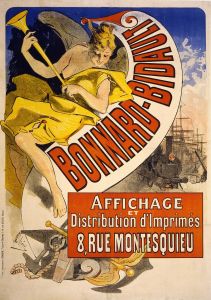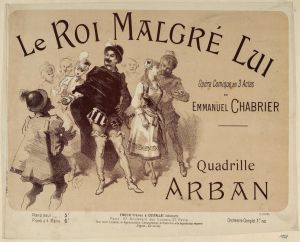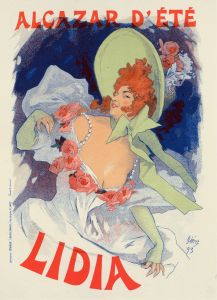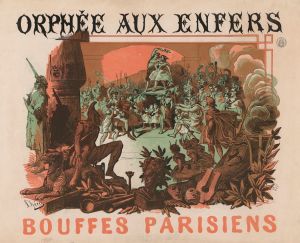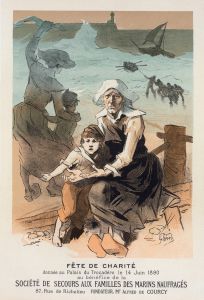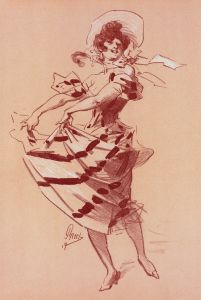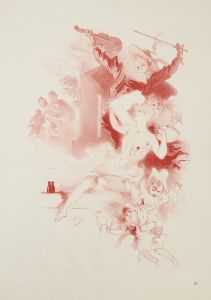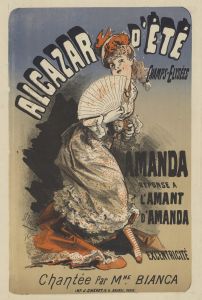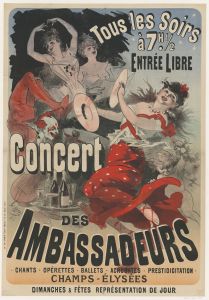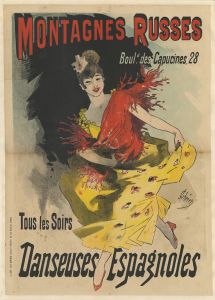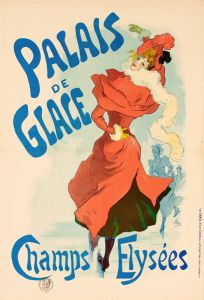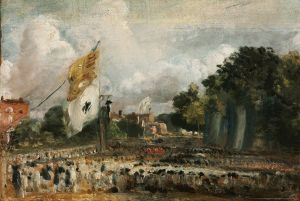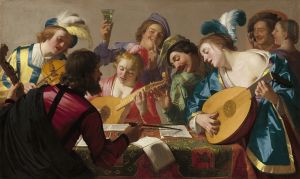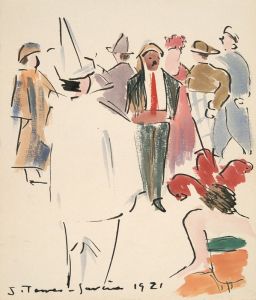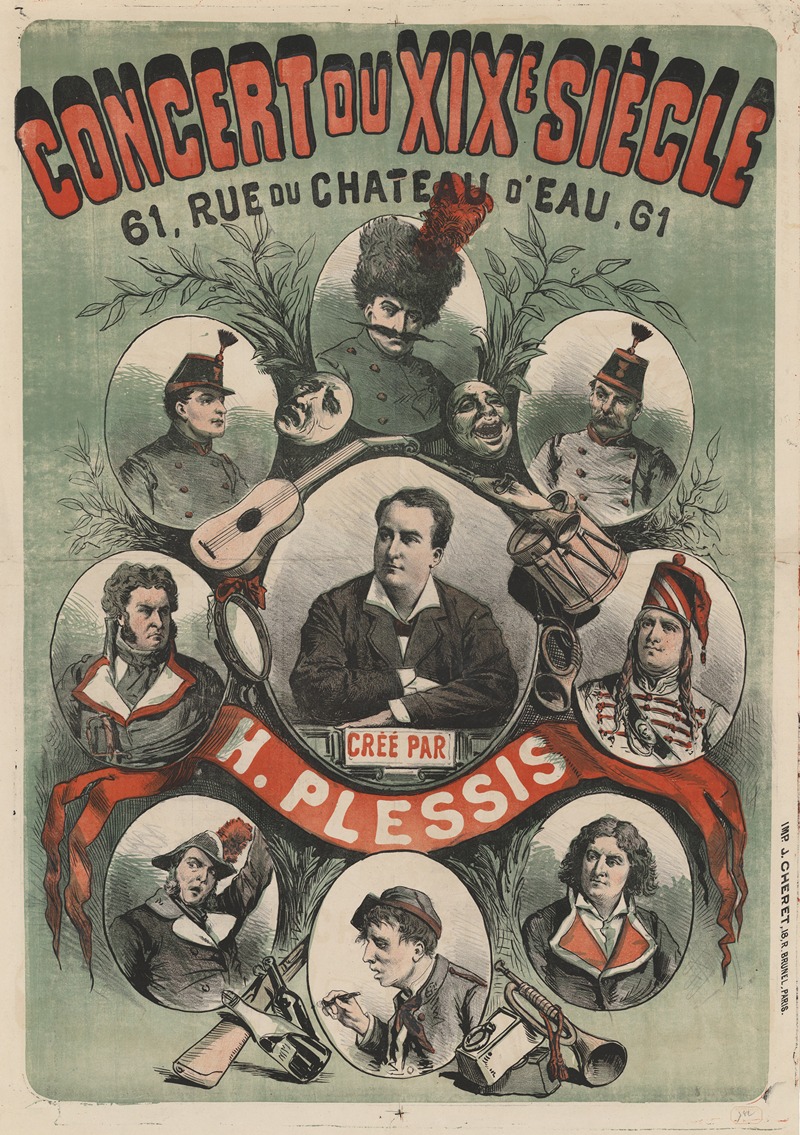
Concert du XIXe siècle. 61, rue du chateau d’eau, 61. créé par H. Plessis
A hand-painted replica of Jules Chéret’s masterpiece Concert du XIXe siècle. 61, rue du chateau d’eau, 61. créé par H. Plessis, meticulously crafted by professional artists to capture the true essence of the original. Each piece is created with museum-quality canvas and rare mineral pigments, carefully painted by experienced artists with delicate brushstrokes and rich, layered colors to perfectly recreate the texture of the original artwork. Unlike machine-printed reproductions, this hand-painted version brings the painting to life, infused with the artist’s emotions and skill in every stroke. Whether for personal collection or home decoration, it instantly elevates the artistic atmosphere of any space.
"Concert du XIXe siècle. 61, rue du chateau d’eau, 61. créé par H. Plessis" is a poster created by the renowned French artist Jules Chéret. Jules Chéret, often referred to as the "father of the modern poster," was a pivotal figure in the development of poster art in the late 19th century. Born in Paris in 1836, Chéret's work is characterized by its vibrant colors, dynamic compositions, and the joyful, lively scenes that often feature prominently.
This particular poster advertises a concert taking place at 61, rue du Château d'Eau, a location in Paris. The concert was organized by H. Plessis, though specific details about H. Plessis are not widely documented. The address, 61 rue du Château d'Eau, was a notable location in Paris during the 19th century, known for hosting various cultural and entertainment events.
Jules Chéret's posters were revolutionary in their use of color lithography, a technique that allowed for the mass production of colorful and eye-catching advertisements. Before Chéret's innovations, posters were typically monochromatic and lacked the visual appeal that his works brought to the streets of Paris. His posters often featured elegant women, known as "Chérettes," who embodied the spirit of the Belle Époque with their graceful and lively depictions.
The "Concert du XIXe siècle" poster is a quintessential example of Chéret's style. It likely features a dynamic composition with vibrant colors and fluid lines, capturing the energy and excitement of the advertised event. Chéret's ability to blend art and advertising helped elevate the poster to a respected art form and influenced many artists who followed in his footsteps.
Chéret's work was not only popular among the general public but also garnered the admiration of his contemporaries in the art world. His posters were collected and displayed in exhibitions, and he received numerous accolades for his contributions to the arts. In 1890, he was awarded the Légion d'honneur, one of France's highest honors, in recognition of his impact on the field of graphic design and advertising.
The legacy of Jules Chéret's work extends beyond his lifetime, as his posters continue to be celebrated for their artistic merit and historical significance. They provide a window into the cultural and social atmosphere of late 19th-century Paris, reflecting the vibrancy and optimism of the era.
In summary, "Concert du XIXe siècle. 61, rue du chateau d’eau, 61. créé par H. Plessis" is a notable example of Jules Chéret's pioneering work in poster art. It exemplifies his innovative use of color lithography and his ability to capture the lively spirit of the Belle Époque. Chéret's contributions to the art of the poster have left a lasting legacy, influencing generations of artists and continuing to be appreciated for their beauty and historical value.





